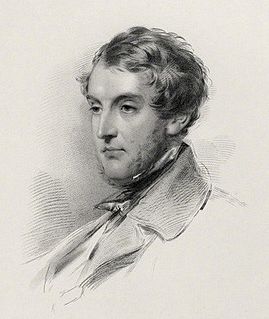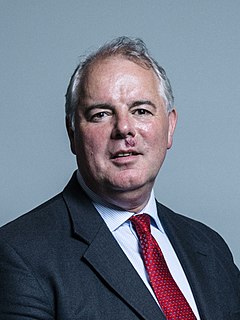This page is based on this
Wikipedia article Text is available under the
CC BY-SA 4.0 license; additional terms may apply.
Images, videos and audio are available under their respective licenses.

Earl of Lichfield is a title that has been created three times, twice in the Peerage of England and once in the Peerage of the United Kingdom (1831). The third creation is extant and is held by a member of the Anson family.

Earl of Lonsdale is a title that has been created twice in British history, firstly in the Peerage of Great Britain in 1784, and then in the Peerage of the United Kingdom in 1807, both times for members of the Lowther family.
Earl of Bradford is a title that has been created twice, once in the Peerage of England and once in the Peerage of the United Kingdom. It was first created in 1694 for Francis Newport, 2nd Baron Newport. However, all the Newport titles became extinct on the death of the fourth Earl in 1762. The Earldom was revived in 1815 for Orlando Bridgeman, 2nd Baron Bradford. The Bridgeman family had previously succeeded to the Newport estates. The title of the peerage refers to the ancient hundred of Bradford in Shropshire, and not, as might be assumed, to the city of Bradford, Yorkshire.
The Comptroller of the Household is an ancient position in the British royal household, nominally the second-ranking member of the Lord Steward's department after the Treasurer of the Household. The Comptroller was an ex officio member of the Board of Green Cloth, until that body was abolished in the reform of the local government licensing in 2004. In recent times, a senior government whip has invariably occupied the office. On state occasions the Comptroller carries a white staff of office, as often seen in portraits.
Longe is an English and French aristocratic household, descending from the House of Bourbon-Préaux, a cadet branch of the House of Bourbon. The surname is of Anglo-Norman origin.
The Lord High Treasurer of Ireland was the head of the Exchequer of Ireland, chief financial officer of the Kingdom of Ireland. The designation High was added in 1695. After the Acts of Union 1800 created the United Kingdom of Great Britain and Ireland, the Consolidated Fund Act 1816 merged the Irish Inferior Exchequer into the British Treasury with effect from 1817, and the post of Lord High Treasurer of Ireland was abolished. The Superior Irish Exchequer, or Court of Exchequer, remained, led by the Chief Baron of the Irish Exchequer.

The House of Herbert is a British Noble House founded by William Herbert, known as "Black William", the son of William ap Thomas, founder of Raglan Castle, a follower of Edward IV of England in the Wars of the Roses. The name Herbert originated in 1461 when William was granted the title Baron Herbert of Raglan, having assumed an English-style surname in place of his Welsh patronymic, ap William.

Brooks's is a gentlemen's club in St James's Street, London. It is one of the oldest and most exclusive gentlemen's clubs in London.
The High Sheriff of County Kilkenny was the British Crown's judicial representative in County Kilkenny, Ireland from the 16th century until 1922, when the office was abolished in the new Free State and replaced by the office of Kilkenny County Sheriff. The sheriff had judicial, electoral, ceremonial and administrative functions and executed High Court Writs. In 1908, an Order in Council made the Lord-Lieutenant the Sovereign's prime representative in a county and reduced the High Sheriff's precedence. However the sheriff retained his responsibilities for the preservation of law and order in the county. The usual procedure for appointing the sheriff from 1660 onwards was that three persons were nominated at the beginning of each year from the county and the Lord Lieutenant then appointed his choice as High Sheriff for the remainder of the year. Often the other nominees were appointed as under-sheriffs. Sometimes a sheriff did not fulfil his entire term through death or other event and another sheriff was then appointed for the remainder of the year. The dates given hereunder are the dates of appointment. All addresses are in County Kilkenny unless stated otherwise.
The Sheriff of County Dublin was the Sovereign's judicial representative in County Dublin. Initially an office for lifetime, assigned by the Sovereign, the Sheriff became an annual appointment following the Provisions of Oxford in 1258. Besides his judicial importance, the sheriff had ceremonial and administrative functions and executed High Court Writs.

The Queen Victoria Memorial in Lancaster, Lancashire, England, is a Grade II* listed building. It stands in the centre of Dalton Square, Lancaster facing Lancaster Town Hall.
It was erected in 1906, being commissioned and paid for by James Williamson, 1st Baron Ashton.

The Villiers family is one of England's preeminent aristocratic families. Over time, various members of the Villiers family were made knights, baronets and peers. Peerages held by the Villiers family include the dukedoms of Buckingham (1623-1687) and Cleveland (1670-1709), as well as the earldoms of Anglesey (1623-1661), Jersey and Clarendon. Perhaps the most prominent members of the family were those who received the two dukedoms: George Villiers, 1st Duke of Buckingham (1592–1628) rose to fame and influence as favourite of King James I of England, while Barbara Villiers, Duchess of Cleveland (1640–1709) became a mistress of King Charles II of England, by whom she had five children.















